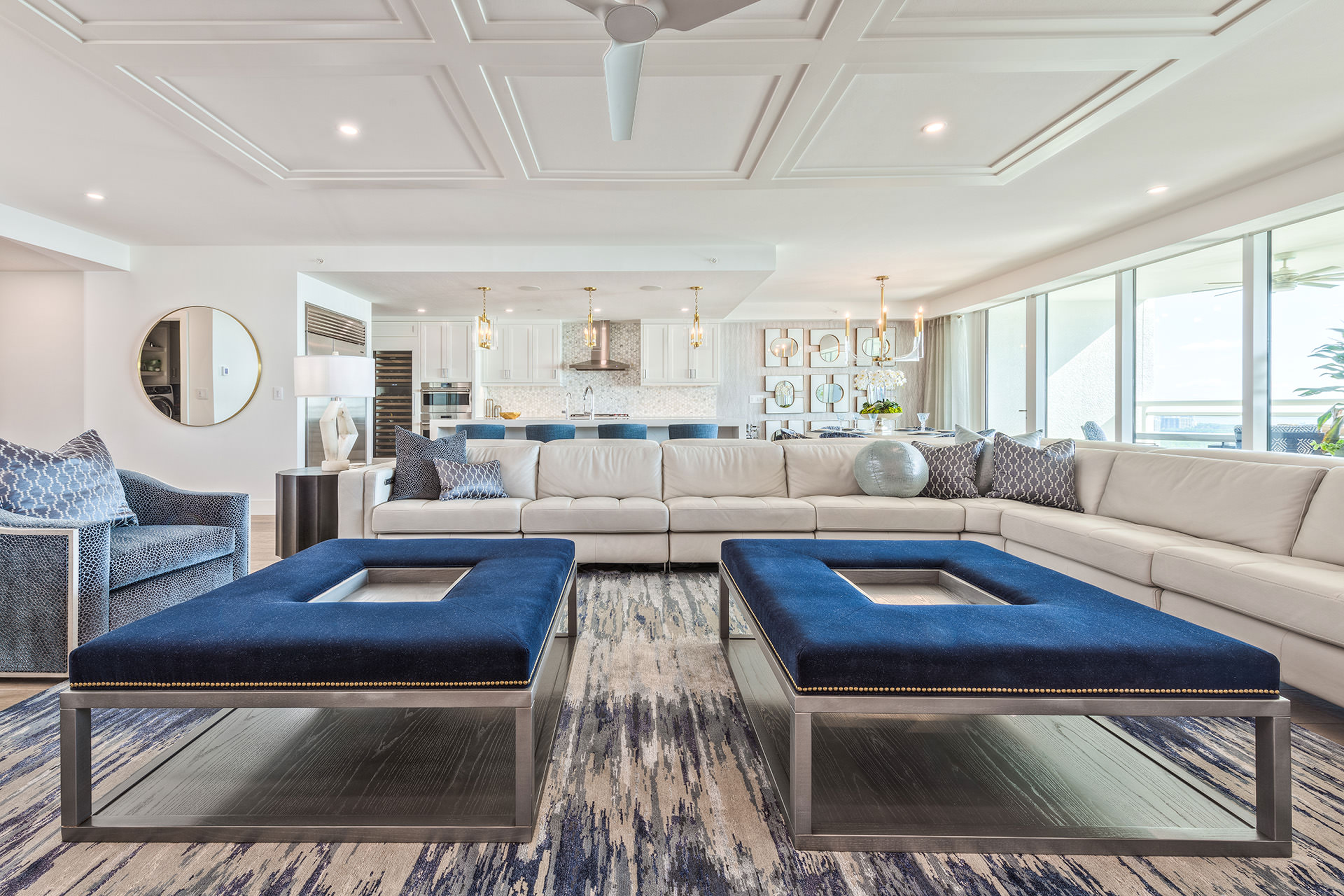HISTORY OF THE SOFA
An investment. An heirloom. A defining feature. A luxury high-end sofa is one of the most important purchases for your home. The sofa invites us to sit and visit, lay down and take a nap or provide the perfect place to reside while taking in TV time. That piece of furniture that gets so much attention in our living rooms has been a ubiquitous staple of life in homes for many thousands of years.
The earliest items of upholstery to be discovered date back to roughly the period of the 18th Dynasty of ancient Egypt, when pharaohs were buried in their tombs with goods and items to make their afterlife more comfortable. When archeologist Howard Carter entered the tomb of the infamous King Tutankhamun in 1922, he found a number of royal couches. Ancient Romans continued to create elegant and more ornate looking sofas, which became an accepted piece of furniture in royal and affluent households.
An investment. An heirloom. A defining feature. A luxury high-end sofa is one of the most important purchases for your home.
Settee – The Oak Period
In the Western world, upholstery and the manufacturing of the sofa, or settee as it was then called, was slow to develop. In the furniture era called the Oak period (1500-1650), houses barely contained any furniture at all. Long benches were made with wood from oak trees, which was resilient to warping, to accommodate several people. Around 1620, settees were commonly found in affluent homes. The high-backed version was ideal for blocking doorways to keep out drafts. They were often ornate with specially built shelves attached to the back to accommodate a candle for nighttime. As architecture improved over the next century, artisans that had been creating fabric wall coverings began putting them on the settees.
Further improvements to the settee were gradually introduced by different countries. The Germans used horsehair as a type of padding, while the English found dried moss worked well as a source of stuffing. The Italians were the first to realize the need for backrests and arms for comfort seating during the Renaissance. The first “double chairs” were created with comfortable padding on the seat and arms. It had fixed central legs to support the elongated seat and the overall form was rectangular in shape, with arm rests that blended into the piece, giving it an air of comfort. In the US, barely a country at that point, the settee was also only a luxury for the wealthy. They were generally covered in what was known as Turkey work, a form of knotted embroidery that was an imitation of the Turkish carpet. The designs ranged from floral to human and animal forms.
Sofa – The Mahogany Period
The Mahogany Period of 1750-1830 ushered in the sofa as we know it. This dense, tightly woven wood allowed for much more creative décor and carving. Another important innovation happened in 1790 when Englishman Thomas Saint invented the sewing machine. With the advent of the 19th century industrial revolution in the United Kingdom, additional techniques were introduced, such as coil springs as an alternative to horsehair stuffing. Artisan furniture-making increased with designers like Chippendale, Hepplewhite & Sheraton making a name for themselves, while Thomas Hope’s beautiful Grecian sofas were also very popular. The sofa came to be known as a piece of furniture used by intellectual people, and so became affordable enough for those who wished to emulate the philosophers of old. Stylings became more fluid and ever-changing with individual interpretations and tastes.
Eighteenth-century luminary Sir Joshua Reynolds made a key observation concerning this progression from buying basic needs to purchasing more luxurious goods, stating, “The regular progress of cultivated life is from Necessaries to Accommodations, from Accommodations to Ornaments.” Perhaps no other industry demonstrated this more than furniture making, and the sofa was the most prominent piece of all.
Sofa – The Georgian Era
The Georgian era is often thought of as the golden age of furniture, with the sofa taking center stage. From the drama and exuberance of Baroque to the intricate asymmetrical patterns of Rococo, and elegant proportions of Neo-Classical, all helped define the luxury high-end detail of Georgian era furniture. Sofas with a wide central section and a single outward-facing seat at each end were called a canapé à confidents and were meant to be a place where people could “share confidences”.
Sofa – The Regency and Federal Era
Roughly coinciding in date and style, the British Regency and American Federal styles were defined by a lighter, more delicate interpretation of the classical Greek and Roman influences. Sofas were simple and practically devoid of the ornate cushion stylings of the previous time. Much more focus was put on the ornately fashioned wood trim and legs.
Sofa – The Victorian Era
With the Victorians, out went the simpler classical lines of Georgian and Regency and in came a more imposing style, with elaborate decoration, heavily carved pieces, and plenty of organic curves inspired by nature and glossy finishes.
With the sofa’s detailed past, understanding the distinction between sofa styles and choosing just the right one for your Naples or Boca Raton home could be a bit overwhelming. Your Clive Daniel interior designer has the experience to find what works just right in your luxury high-end home.
Find your perfect sofa at Clive Daniel Home. Jodi Lurcott, a member of our award-winning team, can help you with your decision. Give Jodi a call in our Boca Raton showroom at 203-733-5888 or email [email protected]. Stretch out or share confidences in style and comfort on your luxury high-end sofa from Clive Daniel Home today.
Image Credit: Naples Interior designers Charlie Hansen and Rebekah Errett-Pikosky




